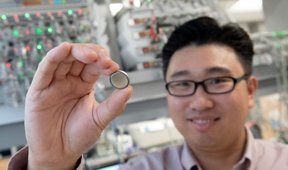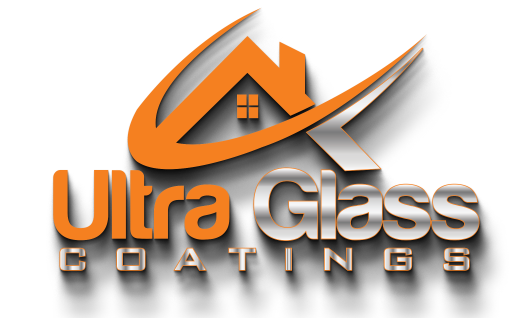Home > Press > UC Irvine researchers decipher atomic-scale imperfections in lithium-ion batteries: Team used super high-resolution microscopy enhanced by deep machine learning
 |
| This project, which relied heavily on some of the worlds most powerful microscopy technologies and advanced data science approaches, clears the way for the optimization of high-nickel-content lithium-ion batteries, says Huolin Xin, UCI professor of physics and astronomy. Knowing how these batteries operate at the atomic scale will help engineers develop LIBs with vastly improved power and life cycles. Steve Zylius / UCI |
Abstract:
As lithium-ion batteries have become a ubiquitous part of our lives through their use in consumer electronics, automobiles and electricity storage facilities, researchers have been working to improve their power, efficiency and longevity.
UC Irvine researchers decipher atomic-scale imperfections in lithium-ion batteries: Team used super high-resolution microscopy enhanced by deep machine learning
Irvine, CA | Posted on January 27th, 2023
As detailed in a paper published today in Nature Materials, scientists at the University of California, Irvine and Brookhaven National Laboratory conducted a detailed examination of high-nickel-content layered cathodes, considered to be components of promise in next-generation batteries. Super-resolution electron microscopy combined with deep machine learning enabled the UCI-led team to decipher minute changes at the interface of materials sandwiched together in lithium-ion batteries.
We are particularly interested in nickel, as it can help us transition away from cobalt as a cathode material, said co-author Huolin Xin, UCI professor of physics and astronomy. Cobalt is toxic, so its dangerous to mine and handle, and its often extracted under socially repressive conditions in places like the Democratic Republic of Congo.
But for the change to be fully realized, battery developers need to know what goes on inside the cells as they are repeatedly discharged and recharged. The high energy density of nickel-layered lithium-ion batteries has been found to cause rapid chemical and mechanical breakdown of LIBs component materials.
The team used a transmission electron microscope and atomistic simulations to learn how oxidation phase transitions impact battery materials, causing imperfections in an otherwise fairly uniform surface.
This project, which relied heavily on some of the worlds most powerful microscopy technologies and advanced data science approaches, clears the way for the optimization of high-nickel-content lithium-ion batteries, Xin said. Knowing how these batteries operate at the atomic scale will help engineers develop LIBs with vastly improved power and life cycles.
Funded by the U.S. Department of Energy, the project relied on facilities at Brookhaven National Laboratory in Upton, New York, and the UC Irvine Materials Research Institute. Paper co-authors included Chunyang Wang, UCI postdoctoral scholar in physics and astronomy; Tianjiao Lei, UCI postdoctoral scholar in materials science and engineering; and Kim Kisslinger and Xuelong Wang of Brookhaven National Laboratory.
####
About University of California – Irvine
Founded in 1965, UCI is a member of the prestigious Association of American Universities and is ranked among the nations top 10 public universities by U.S. News & World Report. The campus has produced five Nobel laureates and is known for its academic achievement, premier research, innovation and anteater mascot. Led by Chancellor Howard Gillman, UCI has more than 36,000 students and offers 224 degree programs. Its located in one of the worlds safest and most economically vibrant communities and is Orange Countys second-largest employer, contributing $7 billion annually to the local economy and $8 billion statewide. For more on UCI, visit www.uci.edu.
For more information, please click here
Contacts:
Brian Bell
University of California – Irvine
Office: 949-824-8249
Cell: 949-565-5533
Copyright © University of California – Irvine
If you have a comment, please Contact us.
Issuers of news releases, not 7th Wave, Inc. or Nanotechnology Now, are solely responsible for the accuracy of the content.
News and information
![]()
Stability of perovskite solar cells reaches next milestone January 27th, 2023
![]()
Qubits on strong stimulants: Researchers find ways to improve the storage time of quantum information in a spin rich material January 27th, 2023
![]()
Temperature-sensing building material changes color to save energy January 27th, 2023
Laboratories
![]()
New method addresses problem with perovskite solar cells: NREL researchers provide growth approach that boosts efficiency, stability December 29th, 2022
![]()
NISTs grid of quantum islands could reveal secrets for powerful technologies November 18th, 2022
Govt.-Legislation/Regulation/Funding/Policy
![]()
Vertical electrochemical transistor pushes wearable electronics forward: Biomedical sensing is one application of efficient, low-cost transistors January 20th, 2023
![]()
Approaching the terahertz regime: Room temperature quantum magnets switch states trillions of times per second January 20th, 2023
Possible Futures
![]()
Stability of perovskite solar cells reaches next milestone January 27th, 2023
![]()
Danish quantum physicists make nanoscopic advance of colossal significance January 27th, 2023
Discoveries
![]()
Stability of perovskite solar cells reaches next milestone January 27th, 2023
![]()
Qubits on strong stimulants: Researchers find ways to improve the storage time of quantum information in a spin rich material January 27th, 2023
![]()
Temperature-sensing building material changes color to save energy January 27th, 2023
Announcements
![]()
Temperature-sensing building material changes color to save energy January 27th, 2023
Interviews/Book Reviews/Essays/Reports/Podcasts/Journals/White papers/Posters
![]()
Qubits on strong stimulants: Researchers find ways to improve the storage time of quantum information in a spin rich material January 27th, 2023
![]()
Temperature-sensing building material changes color to save energy January 27th, 2023
![]()
Danish quantum physicists make nanoscopic advance of colossal significance January 27th, 2023
Automotive/Transportation
![]()
New nanowire sensors are the next step in the Internet of Things January 6th, 2023
![]()
The battery that runs 630 km on a single charge October 7th, 2022
Battery Technology/Capacitors/Generators/Piezoelectrics/Thermoelectrics/Energy storage
![]()
Correlated rattling atomic chains reduce thermal conductivity of materials January 20th, 2023
![]()
Lithium-sulfur batteries are one step closer to powering the future January 6th, 2023
![]()
Tin selenide nanosheets enables to develop wearable tracking devices December 9th, 2022
![]()
Advances in thermoelectric power generation possible with various metal chalcogenide materials, recent review shows November 4th, 2022
Grants/Sponsored Research/Awards/Scholarships/Gifts/Contests/Honors/Records
![]()
Polymer p-doping improves perovskite solar cell stability January 20th, 2023
![]()
The National Space Society Congratulates NASA on the Success of Artemis I Same-day Launch of the Hakuto-R Lunar Landing Mission will Help Support Future Lunar Crews December 12th, 2022










